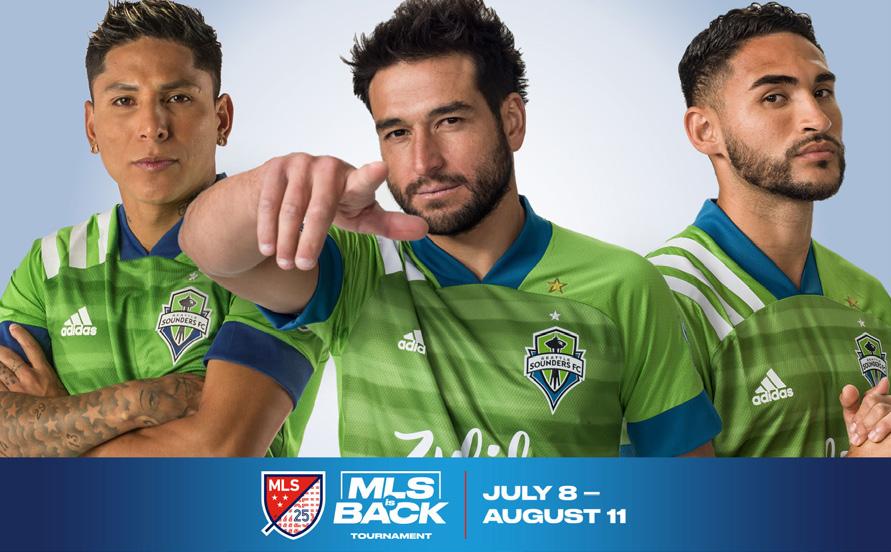
4 minute read
THE BUSINESS OF SPORTS
By Jason Siegel
Tournaments Give Us Head Start in Rebound of Tourism
Advertisement

JASON SIEGEL is president and CEO of the Greater Orlando Sports Commission.
Tourism is coming back. You can see it in the crowds of happy faces all over Central Florida at the airports, theme parks, restaurants and beaches. All summer and throughout the fall, leisure travelers have been returning after being locked down by the COVID-19 pandemic.
But sports tourism has been here all along. It was one of the first segments to rebound. And it will continue to be a key driver in Orlando’s tourism recovery.
“Sports tourism was an early bright spot when Orlando began to reopen in the summer of 2020 as we hosted the NBA bubble, the MLS is Back Tournament and youth events such as the AAU’s Junior National Volleyball Championship,” said Casandra Matej, president and CEO of Visit Orlando.
Matej and other local leaders say all of this activity has given Orlando a one-year head start over other destinations that are also trying to recover from the financial effects of the pandemic. Think about it. A one-year head start. How did that happen?
Early in the pandemic, during the 2020 season, eyes around the world were focused on Orlando as sports fans watched the National Basketball Association hold its games and choose a national champion inside what became known as “the NBA bubble” at Walt Disney World. Star players from around the league practiced on makeshift courts where parquet floors covered ballroom carpeting. In between, they isolated in their hotel rooms and ordered takeout from local restaurants.
Major League Soccer (MLS) held its MLS is Back Tournament inside another bubble at the ESPN Wide World of Sports Complex at Disney, bringing in players, coaches and staff from teams all over the country. Soon after, the Orange County Convention Center hosted more than 17,000 players and staff from the Amateur Athletic Union (AAU) for what became the largest sporting event to take place since the beginning of quarantine.
All of these activities put dollars into the local economy. They also promoted Central Florida as a travel destination at a time when tourism marketing dollars were hard to come by.
To underline this, the 2021 edition of the same AAU Youth Volleyball event, hosted this summer, drew more than 130,000 participants and visitors. Here’s what Mark Tester, executive director of the Orange County Convention


Orange County Convention Center Hosts Record-Breaking AAU Volleyball Event
Center, said about the impact: “The event drove one of our highest food and beverage totals in the center’s history.”
When business travel collapsed, some cities were saved by their youth and amateur sport travel business. There is no doubt in my mind that sports tourism is a viable pathway for generating visitor spending and promoting a destination. That’s why Orlando has put such a high priority on it.
Central Florida’s emphasis on encouraging sports-related travel and welcoming teams and players has been a gamechanging factor in driving incremental impact.
Al Kidd, president and CEO of Sports ETA, the international association for the sports events and tourism industry, is one of several influential voices hailing Orlando’s rapidly recovering tourism industry and identifying sports as a key driver.
“As we emerge from the restrictions and challenges of the pandemic and return to business, great cities like Orlando are poised to recover faster than others,” Kidd said. “Sports events and sports tourism in Orlando have been shown to be the reentry catalyst, generating new and much-needed business.”
Another leader who has spoken out about this phenomenon is Jesse Martinez, general manager at The Alfond Inn, chairman of the Central Florida Hotel & Lodging Association board of directors and a board member for Visit Florida. “In my opinion, Central Florida has a tremendous head start on all other major city travel destinations,” Martinez said. “After seeing a huge influx of travelers this past spring break, we have not slowed down since.”
In normal times, Orlando has the largest tourism industry in the United States, producing $26 billion a year — exceeding the $19 million figure of Las Vegas.
One in five people employed in Orlando, or about 21%, worked directly in hospitality and leisure in 2019. When COVID-19 struck, the unemployment rate skyrocketed. Our neighbors at Port Canaveral, who derive significant revenue from the cruise industry, lost 43% of their workforce.
But as life normalizes, the recovery has been swift — much more so than many anticipated. Hotels are taking bookings, forward occupancy is very promising, and optimism abounds.
According to a study written by Adam Sacks of Tourism Economics, hotel room demand overall has reached 89% of 2019 figures and air passenger figures were at 71% as of June. Leisure trips will be nearly back to pre-pandemic levels in 2022, although business travel will take longer to rebound. Sports tourism is expected to continue strong.
With all of this as a backdrop, Orlando continues to position itself as one of the top 10 of 17 candidates vying to become U.S. host cities for the 2026 FIFA World Cup. Our reputation as a collaborative tourism community and reliable partner to sports, and our popularity as a destination, suggest we surely deserve a place.










